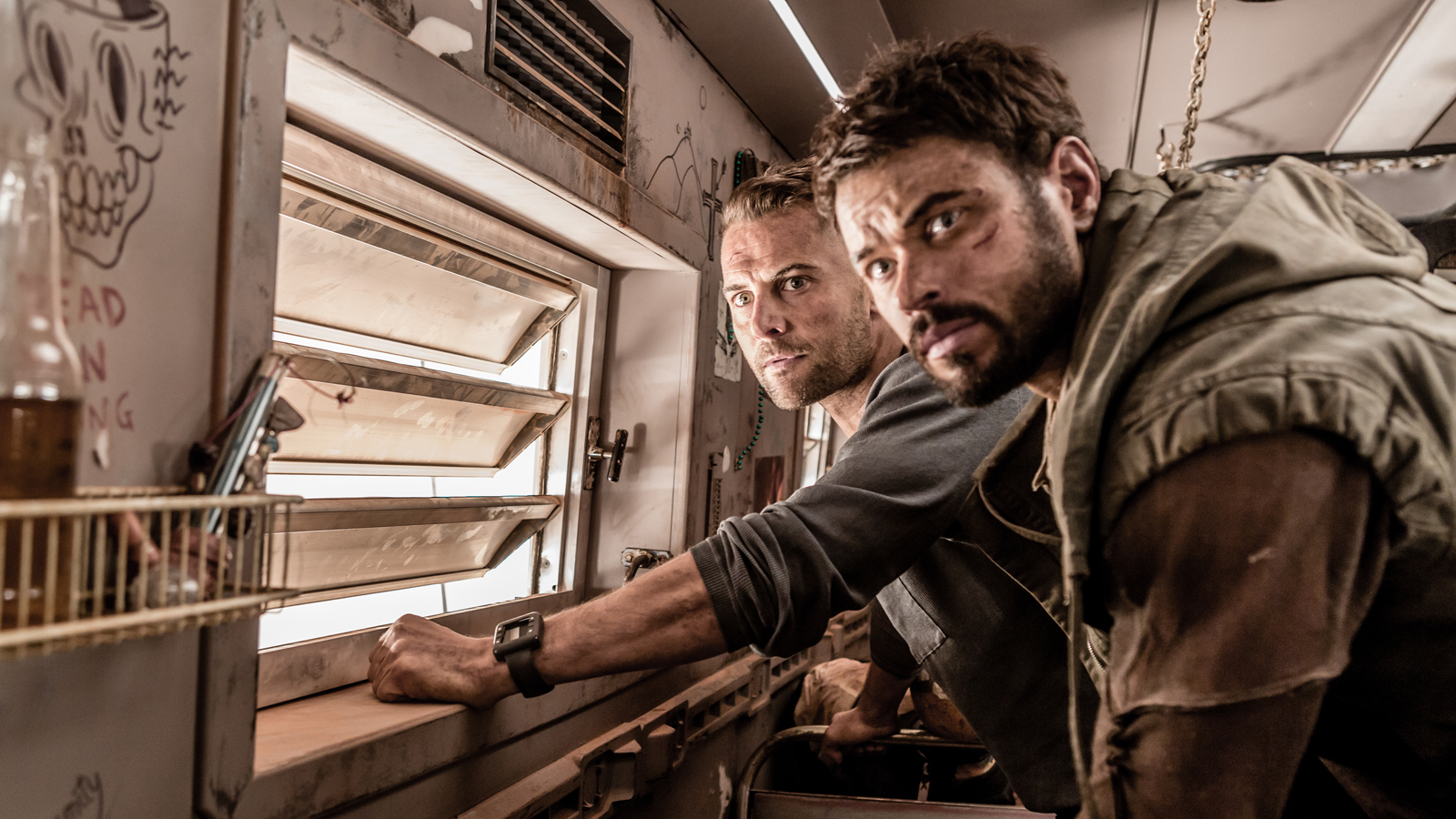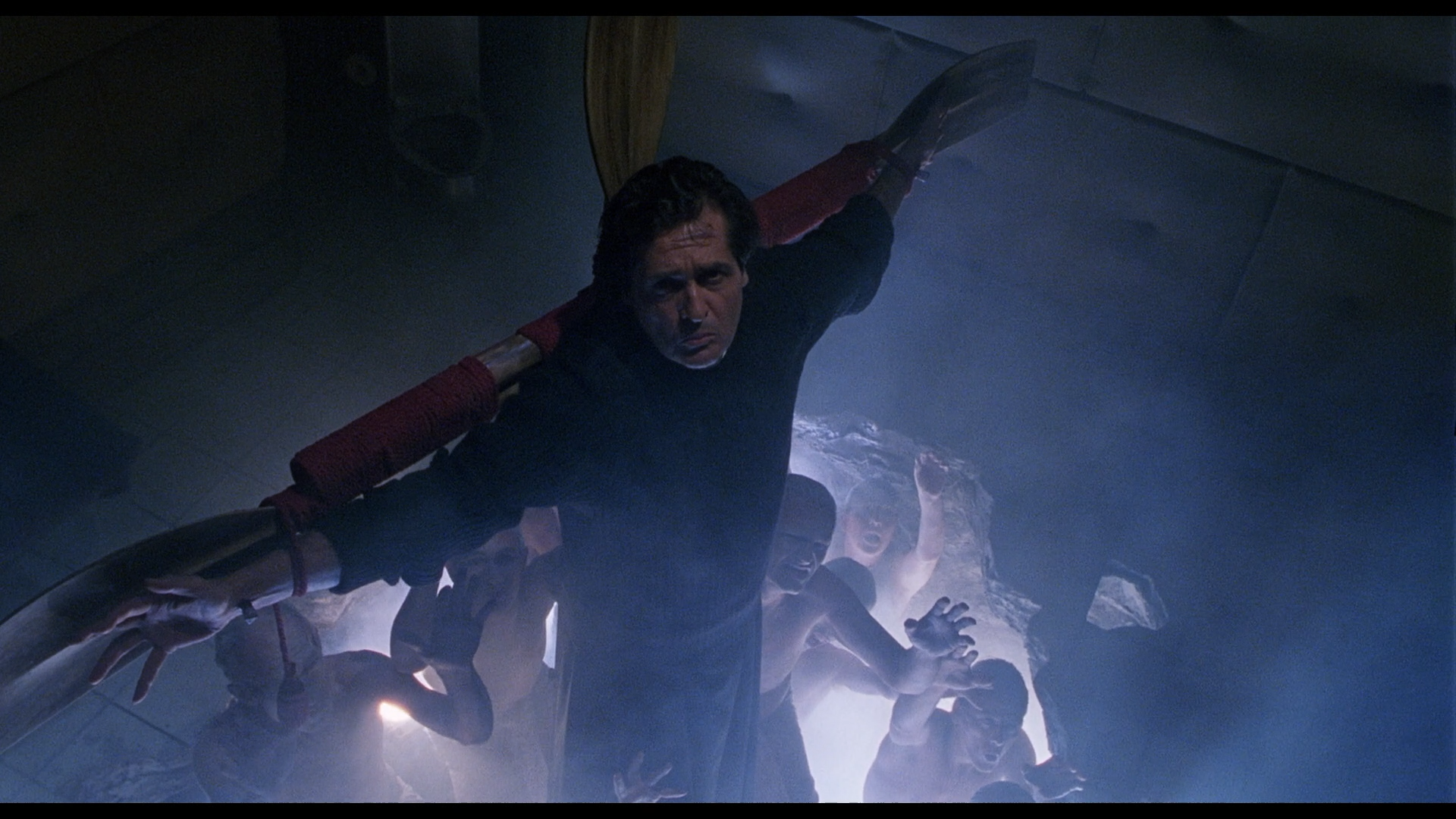The title of The Osiris Child: Science Fiction Volume One immediately raises red flags in terms of what one should expect from it. Everything to the left of the colon is just fine, but what follows seems to dubiously claim that not only is it part of an ensuing series unimaginately titled after its genre, but that this is but the first volume in a series that has yet to see its sequel announced or funded in any form. It betrays in the filmmakers a level of ambition that is yet unfounded and a commitment to a franchise that hasn’t even proven to function as a standalone project yet. And really, that first impression is a fairly accurate reflection of The Osiris Child. It’s a movie that doesn’t stand alone and has little hope of actually continuing beyond its dangling promise of an ending. However, there’s a charm and audacity in its ambitions that can’t quite be ignored, either.
The story, such as it is, finds Lt. Kane Sommerville (Daniel McPherson) racing against time to reach the city of Osiris and deliver his daughter to safety as a catastrophic detonation threatens to wipe out the planet and its inhabitants. Upon landing, he encounters escaped prisoner Sy Lombrok (Kellan Lutz), who reveals that the reason for the detonation is to eradicate a strain of weaponized mutants that Lt. Sommerville’s superiors had developed using the remote prison’s inmate population. The unlikely pair team up and travel across the wastelands to reach Osiris before time runs out.
There are a ton of interesting ideas at play in the world-building and implied lore of The Osiris Child. There’s a militaristic society hovering in the clouds that has no issue with wiping out an entire planet’s worth of people to cover up its mistakes. There are hulking mutants—realized with animatronic practical effects, no less!—that spread their infection to other humans with whip-like tongue-lashings. There’s a junkyard society where violence and bravado do you better than pleas for assistance or compassion. It’s a hodge-podge of neat concepts and ideas that lead to some really engaging action beats involving futuristic aerial craft, inventively designed prison cells designed to subtly torture, and gun-toting showdowns between hillbillies and monsters.
It’s such a shame then that there isn’t much of a plot to hang these interesting concepts on. There is a story, and it has an ostensible beginning, middle, and end, but there isn’t much of a narrative arc to proceedings or much reason to become invested in our stock, boring characters. Kane Sommerville is about as much of a cypher as they come, and Sy only becomes better in retrospect as his backstory is revealed in flashbacks that neither benefit the narrative for their anachronistic interjection nor provide any compelling parallels that shed a light on Sy’s character as it relates to the circumstances of this story. Almost none of the writing and direction seems to have been invested in developing rich characters to guide us through their world, which leads to flat expository dialogue that exists for the sole purpose of propelling us from one admittedly cool spectacle to the next, albeit paced so bafflingly and poorly that the chaptered title cards that pop up are absolutely necessary to give the edits any sense of coherence.
This isn’t to say there isn’t a lot to like about The Osiris Child. For a low-budget indie film it looks absolutely great, with effects work that places some studio productions to shame. But none of that spectacle means anything if it isn’t grounded in a compelling story or interesting characters, and Science Fiction Volume One doesn’t really offer either. If you just want to see future planes and monsters and the like, you might be able to turn your brain off for a second to enjoy the jerky, goofy ride. But that isn’t really enough to warrant a second volume.













